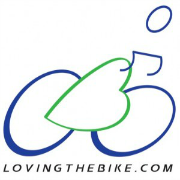It’s just about grilling season, right? While I’m sure that many of you have been using your grill year round, I’m talking about the official season, when you don’t have to put on gloves and a beanie just to take the a peek at your dinner. This year, mostly because my oven crapped out, I’ve mastered the grill. Once only my husband’s domain, I can now long-tong flip things with the best of them. I’m ready. And, you know what they say, “Give me a fish and I eat for a day. Teach me to fish (or how to go to the grocery store, pick out a fish, and then grill it) and I eat for a lifetime.” Which leads me to:
Recipe of the week: Cedar-Planked Salmon
Ingredients:
- 3 (12 inch) untreated cedar planks
- 1/3 cup vegetable oil
- 1 1/2 tablespoons rice vinegar
- 1 teaspoon sesame oil
- 1/3 cup soy sauce
- 1/4 cup chopped green onions
- 1 tablespoon grated fresh ginger root
- 1 teaspoon minced garlic
- 2 (2 pound) salmon fillets, skin removed
Directions:
- Soak the cedar planks for at least 1 hour in warm water. Soak longer if you have time.
- In a shallow dish, stir together the vegetable oil, rice vinegar, sesame oil, soy sauce, green onions, ginger, and garlic. Place the salmon fillets in the marinade and turn to coat. Cover and marinate for at least 15 minutes, or up to one hour.
- Preheat an outdoor grill for medium heat. Place the planks on the grate. The boards are ready when they start to smoke and crackle just a little.
- Place the salmon fillets onto the planks and discard the marinade. Cover, and grill for about 20 minutes. Fish is done when you can flake it with a fork. It will continue to cook after you remove it from the grill.
Comments:
So, I chose an easy one this week. It’s easy to go on and on about the benefits of salmon. Except for the fact that our polluted planet has made this otherwise almost-perfect food slightly tainted with small amounts of mercury (it’s a low-mercury fish relative to others, but not completely mercury-free), it’s a no-brainer. Here’s why I love Salmon.
First, the omega-3s found in salmon, eicosapentaenoic acid (EPA) and docosahexaenoic acid (DHA) are extremely heart healthy. They are well researched and have repeatedly been proven to reduce triglycerides (the type of fat found in your blood that has huge impact on plagues that form in arteries) and reduce risk of stroke. Next, these fats are anti-inflammatory. This means that they reduce risk of chronic diseases that are promoted by inflammation, such as heart disease and diabetes. Then, they help us maintain healthy blood sugars. How? They make our cells more sensitive to insulin. Insulin is the hormone that moves sugar from our blood stream into our cells. When our cells are resistant to insulin, the sugar stays in the blood, where it can do a lot of damage, such as making our arteries hard instead of elastic. And fourth, DHA is a type of fat that is stored in, and used by our brains. Most of the storage does in fact take place when babies are in the womb and up to 2 years after birth, but it never hurts to keep trying to pack it in, right?
But, I bet you already knew all of this.
On the other hand, you may not have realized that the DHA and EPA from salmon actually increases the amount of calories and fat your body burns while decreasing your fat storage!!! Sound like a fishy story too good to be true? It’s not. Recent studies show an increase in calorie output with approximately 2000 mg DHA/EPA per day (you’ll average 1000 mg per day by eating 12 oz. salmon per week, so consider supplementing another 1000 mg per day). Furthermore, since the fats make your cells more sensitive to insulin, they reduce fat storage. You see, the more your cells resist insulin, the more your body has to pump it out. The more insulin pumped out, the more fat stored. The more insulin sent out, the less fat metabolized and burned. The more insulin sent out over and over, the less sensitive cells become to insulin, so they begin to require more and more insulin sent out, and you’ve guessed it, more fat is stored. This is a vicious, ugly cycle, especially for a cyclist who has to pull his or her weight up a hill. But, thankfully, it’s no match for salmon.
As if that weren’t enough, salmon packs a lot of other nutrients beside healthy fats. The B-vitamins may have as much to do with the heart-healthy effects as the fats. And, the protein found in salmon, ~7 grams per ounce, helps you stay full longer, again burn more calories, and enjoy long-lasting steady energy.
I promised to feed you for a lifetime… So, when you go to the store, make sure to pick Wild-Caught salmon – this way it has less agriculture pesticide run-off and no artificial colorings. Then, make sure there is no fishy smell to it. It should be a bright orangy-pinkish color, no graying. Take it from someone who is land-locked in Colorado, you have to be picky when picking your fish.
Now you know everything needed for buying and enjoying salmon. What cyclist couldn’t use a great dinner, more energy, and better fat burn?!?
Fuel your Ride. Nourish your Body.
